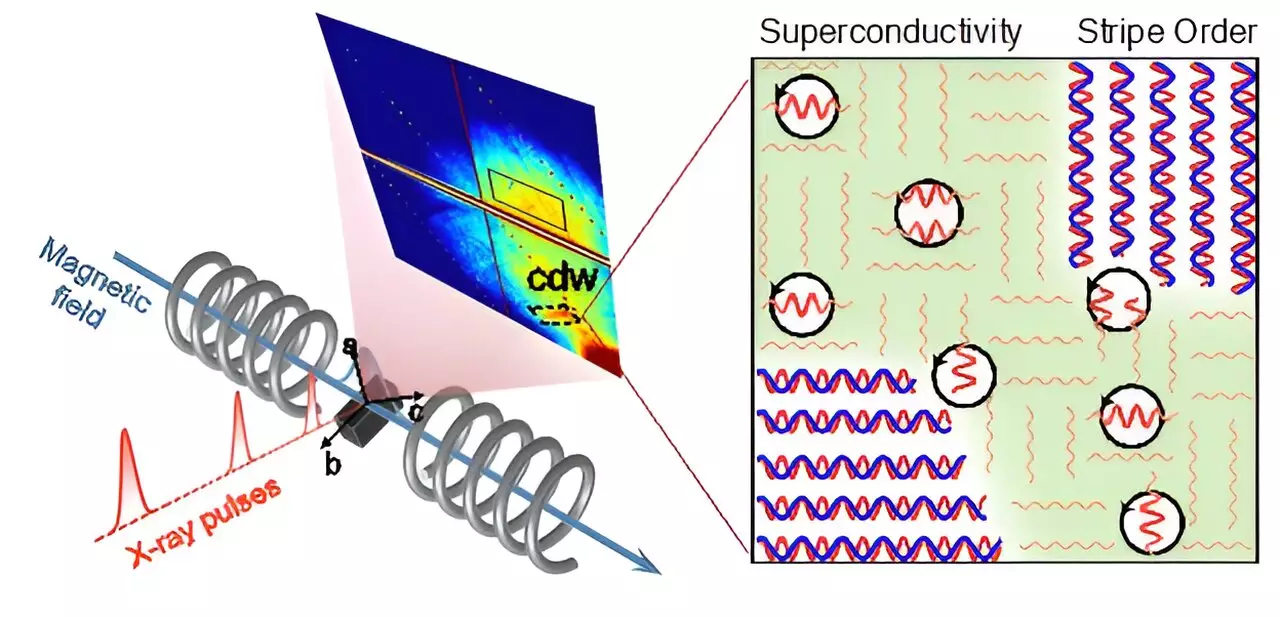Cuprate superconductors, a fascinating class of materials rich in copper, have piqued the interest of scientists aiming to unlock the secrets of high-temperature superconductivity. Traditional theories suggest a seamless relationship between superconductivity and electron behavior, yet cuprates illuminate a far more complex picture. At the heart of the phenomena observed in these materials are intertwined properties: magnetic spin and charge density wave (CDW) order. These attributes highlight the dual nature of electrons, manifested in their spin and charge. In conventional metal, these spins average out, yielding uniform charge distributions. However, in cuprates, significant electron-electron interactions open the door to exotic behaviors, including the formation of “stripe states.”
The Dance of Stripes: Spin Density Waves and Charge Density Waves
Recent research, published in *Nature Communications*, challenges long-held assumptions about superconductivity within these materials. Traditionally, researchers viewed the interplay of magnetic spin and CDW as adversarial, where the competitive nature of these properties disrupts superconductivity. The new findings tell a different story, revealing that short-range CDW can coexist harmoniously with superconductivity, introducing a new layer to our understanding of these complex materials. In cuprates like La1.885Sr0.115CuO4, where strong magnetic interactions induce an ordered state with stripe-like structures, spins align in a regular pattern while charges fluctuate. This striped order reinforces the material’s stability, leading to innovative insights into how superconductivity may flourish where it was previously believed to be stifled.
Short-Range Charge Order: A Game Changer
Moreover, the study suggests that short-range charge order not only softens the competitive edge of long-range stripes but may actively promote superconductivity. This is a profound shift in perspective; rather than simply disrupting superconductivity, short-range CDWs enhance certain superconducting properties. This nuanced relationship hints at a more intricate tapestry of interactions within cuprates that could help refine existing theories and lead to new avenues of research for superconductivity at elevated temperatures. The potential to stabilize the superconducting phase in high magnetic fields heralds a promising frontier for future applications, from energy transmission to quantum computing.
Discoveries in High Magnetic Fields
The research findings are further enlightening, as they detail complex behaviors observed under strong magnetic fields ranging between 12 and 24 Tesla. Under these conditions, the cuprates enter a regime where the static vortices—often a nuisance in superconductivity—transition into a fluid state. This suggests that external magnetic influences can alter the material’s electronic landscape, leading to phenomena like vortex motion that might be exploitable to achieve high-performance superconductivity. The correlation between CDW intensity enhancement and the melting of vortex states provides compelling evidence for a phase-disordering scenario that could redefine the superconducting transition process.
As investigations into cuprate superconductivity broaden, the insights gleaned from the intricate interplay between charge density waves and superconductivity promise to guide future endeavors in material science. The potential for a unified quantum description of these phenomena not only demonstrates the depth of scientific inquiry but also underscores the evolving nature of our understanding in the realm of high-temperature superconductors.

